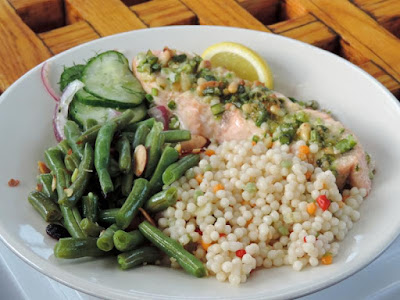What makes a person buy a tapped-out wooden boat and then spend a lifetime restoring and operating it?
 |
|
Breaking storm, oil on canvas, by Carol L. Douglas. I used American Eagle for my model, but the sea and sky are imaginary. Owl’s Head light is not, though.
|
American Eagle is one of a dozen windjammers plying the Maine coast. These historic schooners have been retrofitted from cargo or fishing as a niche vacation experience. Around 6000 people take an overnight schooner trip in Maine each summer. To put that in perspective, 164,513 people visit some part of Walt Disney World Resort every day.
There are no crowds, screaming kids, or queues on a schooner. There are, however, lines, which are sometimes called sheets, painters, or even ropes. A boat is a linguistic treasure-trove, but I digress.
Schooner captains wear three hats: they’re master sailors, fine carpenters and they run hospitality businesses. To make this work, they must have a stubborn streak of romanticism. Without that, all of these big boats would have been left to rot. Running a schooner business is incredibly hard work.
 |
| More work than they bargained for, by Carol L. Douglas. That’s the former Isaac H. Evans, now Boyd N. Sheppard, after a Coast Guard inspection. |
Our annual watercolor sketching trip aboard American Eagle is from June 9-13. (The practical details are here.) Here are some questions that readers have asked me:
How much time do we spend painting? We have to squeeze our work in between eating delicious meals and exploring islands, but we usually get about six hours of painting in every day.
 |
| I’m dieting so this is the part of searching through photos I don’t like. That was fresh caught salmon, cooked immediately. Courtesy American Eagle. |
Can I help sail the boat?Guests are encouraged to participate in running the ship, including hoisting sails, taking a turn at the wheel, or helping out in the galley. Or they can read or watch the world go by.
What do we eat? Our meals are prepared on a woodstove below deck. They’re terrific. The mess-mate, Sarah, lives off the grid in her other life. The cook, Matthew, has adapted admirably to his 19th century work space. What they turn out from that kitchen is nothing short of miraculous.
I’ve never been on a boat before. What if I get seasick? Motion sickness is less of a problem on schooners because they move more gently through the water than smaller vessels. And our part of the coast is protected from weather by the many islands lying offshore.
What should I bring?All your painting supplies are provided, but you’re welcome to bring other water-based media. As for clothing, Shary will send you a list before you get here.
 |
| Big-Boned, by Carol L. Douglas. That’s schooner Heritage taking her turn on the slipway. |
How well-maintained are these vessels? Right now, they’re coming in to the slipway at the NorthEnd Shipyard for their annual spring fit-out, where they are scraped and repaired and undergo a rigorous Coast Guard inspection. They all carry modern navigation, rescue and communication devices.
Tell me about the boat we’re sailing on. She was launched in 1930 at Gloucester as Andrew and Rosalie, named for her first captain’s children. She was the last auxiliary schooner (powered by both sail and engine) to be built in that port, and was one of Gloucester’s last sail-powered fishing vessels.
Andrew and Rosaliewas used for fishing by Patrick Murphy and family until 1941, when she was sold to the Empire Fish Company. They renamed her American Eagle and converted her for use as a trawler.
In 1984, she was purchased by Captain John Foss and restored for the tourist trade. American Eagle is on the National Register of Historic Places and is a National Historic Landmark. She is the sole surviving representative of the transitional period between traditional sail-powered fishing vessels and more modern trawlers.
Boothbay Harbor’s Windjammer Days publishes a great list of the 16 boats that will visit their harbor for the 57th Annual Windjammer Days Festival this June. That includes Maine’s dozen and four interlopers from Massachusetts. It’s a fun event.



